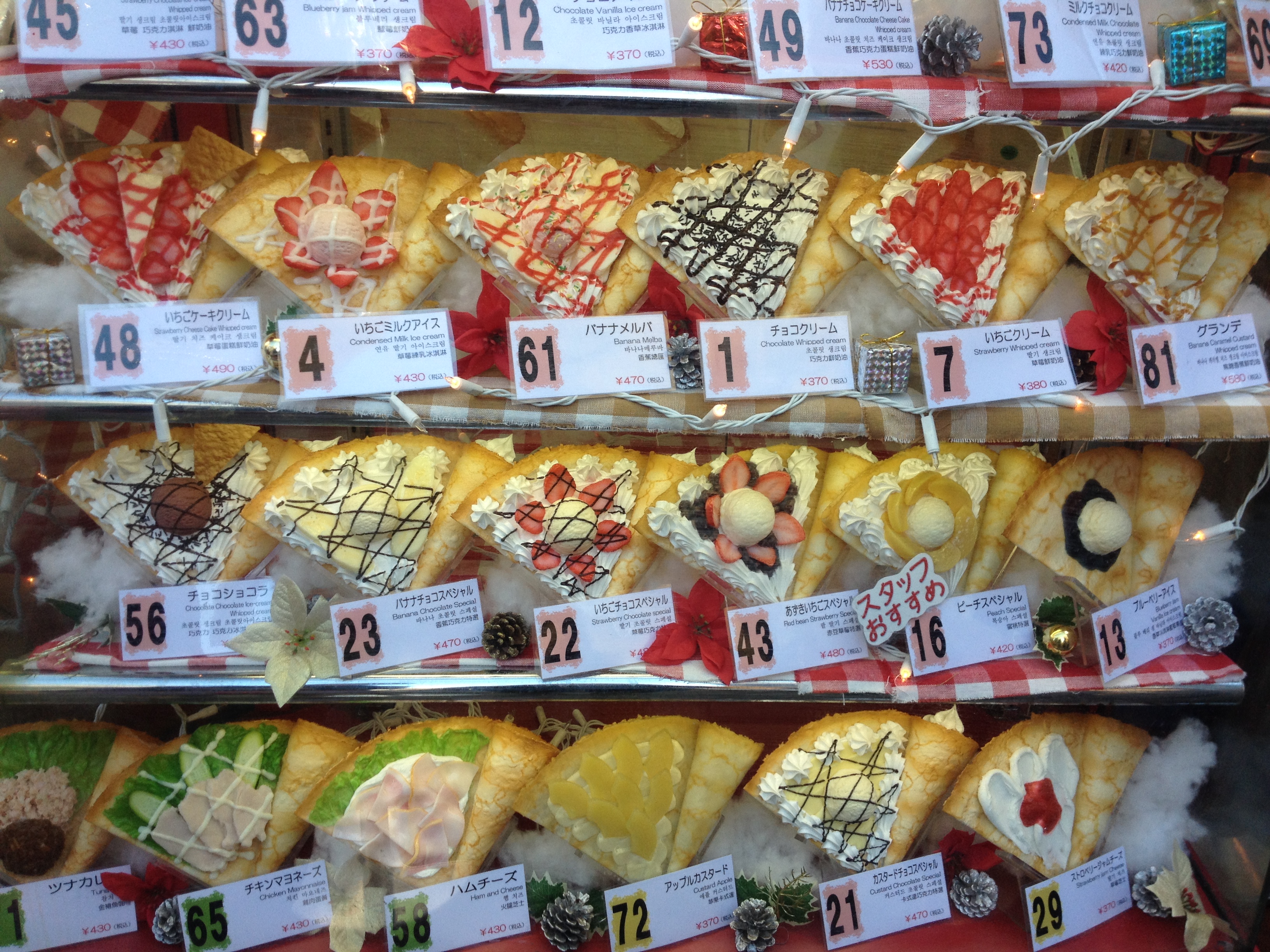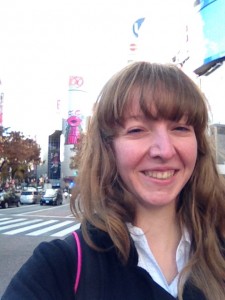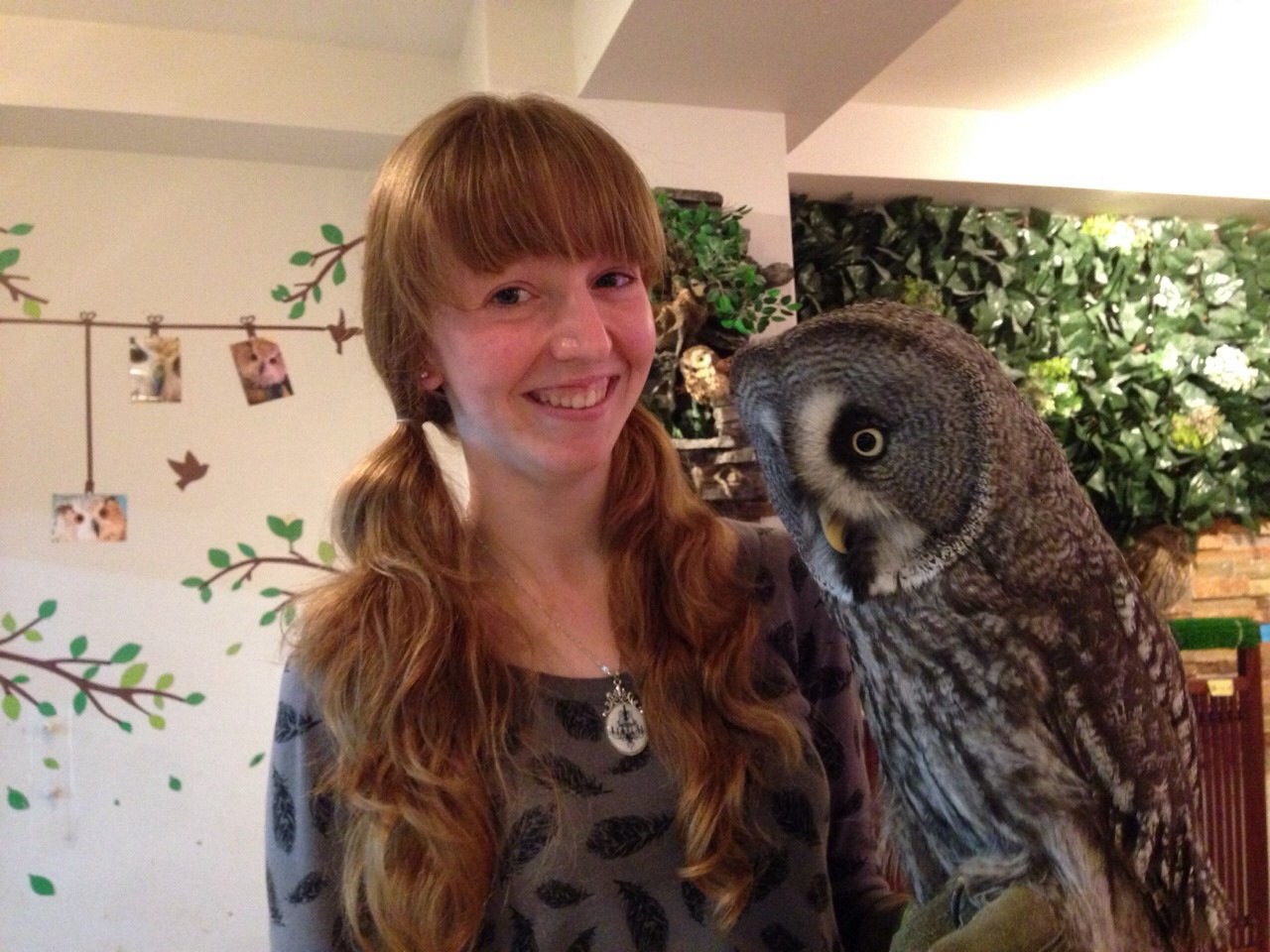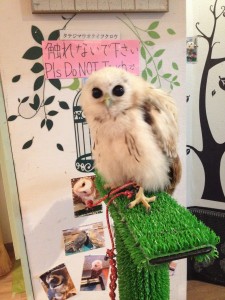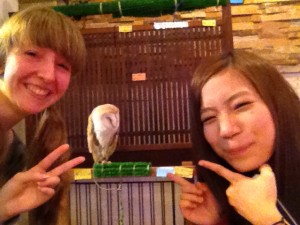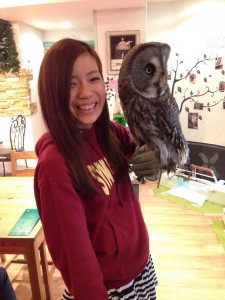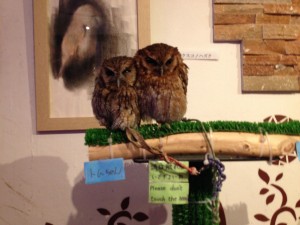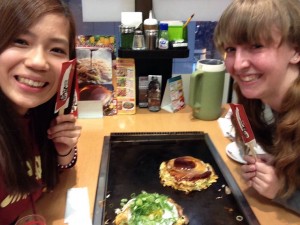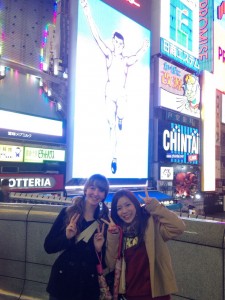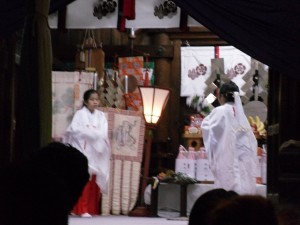Last Friday I took a night bus from Kyoto to Tokyo to save money. As convenient as the shinkansen is, it’s rather expensive. So my friend and I arrived at Tokyo Station at about 7:30am on Saturday morning. We first visited Meiji Jinggu Shrine since it was the only thing open at that time of day except one donut and coffee place in the station. That’s one of the things that doesn’t cease to surprise me about Japan. Nothing except bars and restaurants are open past eight and nothing opens earlier than nine or ten in the morning. Even on a Saturday in Tokyo, the most densely populated city in the world. Eventually things started opening up, though. First we walked Omotesando Hills, a high-class, almost exclusively brand-name shopping district. After that, we headed toward Harajuku’s Takeshita Street, the youth fashion district of Tokyo.
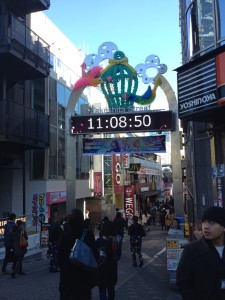 It really was something. From lolita to grunge to used clothing, Takeshita-dori has it all. It would take several days to properly investigate every store, but even just walking through and looking in only a handful of stores was really cool. A lot of it was less expensive than I was expecting, though I only bought a really cute headband from BODYLINE. There are also several places to get crepes as well as a few cafes, so we stopped for crepes at the place with the biggest line.
It really was something. From lolita to grunge to used clothing, Takeshita-dori has it all. It would take several days to properly investigate every store, but even just walking through and looking in only a handful of stores was really cool. A lot of it was less expensive than I was expecting, though I only bought a really cute headband from BODYLINE. There are also several places to get crepes as well as a few cafes, so we stopped for crepes at the place with the biggest line.
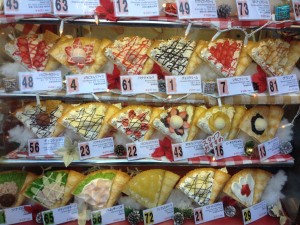
Part of one of the display cases full of replicas of the crepes they were selling with their rank in popularity as the number. There were three whole display cases.
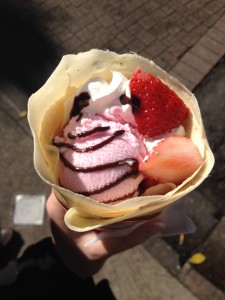
I got the one called “Flamingo,” which had strawberry ice cream, strawberries, chocolate, and whipped cream. Fantastic!
After Harajuku we hopped the loop line to Shibuya, the famous shopping district where I wanted to explore the famous 109 and the shops around it. Naturally, we used the famous Scramble Crossing (after visiting Hachiko), where seven roads meet at a single intersection. Right across from the station is a seven-floor Tsutaya, a popular media vendor and rental company. I’ve never seen one that big, even in Osaka. It was incredible! They even had their own Starbucks inside. I also walked around 109 for a little, but because of time restraints I didn’t look on every floor. It did look a lot like the malls back in Osaka Prefecture, though!
After spending a few hours in Shibuya, we moved on to the Udagawa area to look for my friend’s hotel. After that was settled, we moved on to Akihabara, a kind of nerd/pop culture shopping/amusement area. There are multi-story arcades house floors of crane machines as well as the arcade games. My favorite is the game where you flip a table and get higher scores for the amount of damage you do. It’s kind of like being Wreck-it-Ralph, only you just flip a table.
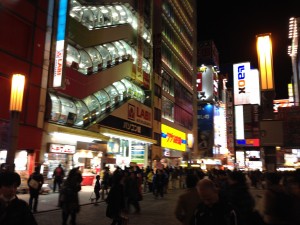
Akihabara at night. Even though I went there before, I was completely lost because it looks very different at night.
There’s also a lot of the prize machines where you put in coins, turn the handle, and a random prize in a little round capsule comes out. They have all sorts of prizes, but a lot of them are charms of different characters from popular anime/manga. The best one I saw was one that had “Eiga Dorobou” in it. “Eiga Dorobou” literally means “movie thief,” and he appears at the beginning of every movie in Japanese theatres that I’ve been to. Japan tracks and enforces illegal downloading much more than America does, so there’s little videos before every movie reminding viewers that it’s illegal to record the movie, etc., but Eiga Dorobou is a man in a suit with a camcorder for a head and he’s chased by the police who are men in suits with police siren lights for heads so it’s still pretty amusing. You can find the Eigo Dorobou videos on YouTube even. Needless to say, I got a little Eiga Dorobou charm. I’m actually a little disappointed I didn’t get a few more. Definitely going to be checking the “gacha machines” nearer to home for more!
After shopping and wandering through arcades for good crane machine prizes, it was time for me to hop a night bus back home. I almost missed it, however, because I had be misinformed about where the bus loading terminal was. With only a few minutes until departure, I started panicking. But I asked a man passing by where to go and he ended up leading me to where they were. He even ran to help me try to make it on time when I showed him my ticket and the departure time was only a minute away. In the end, I had to run across the entire bus terminal because of course my bus was at the far end. But the driver had waited five minutes for me so I ended up getting home alright, if a little frazzled.
